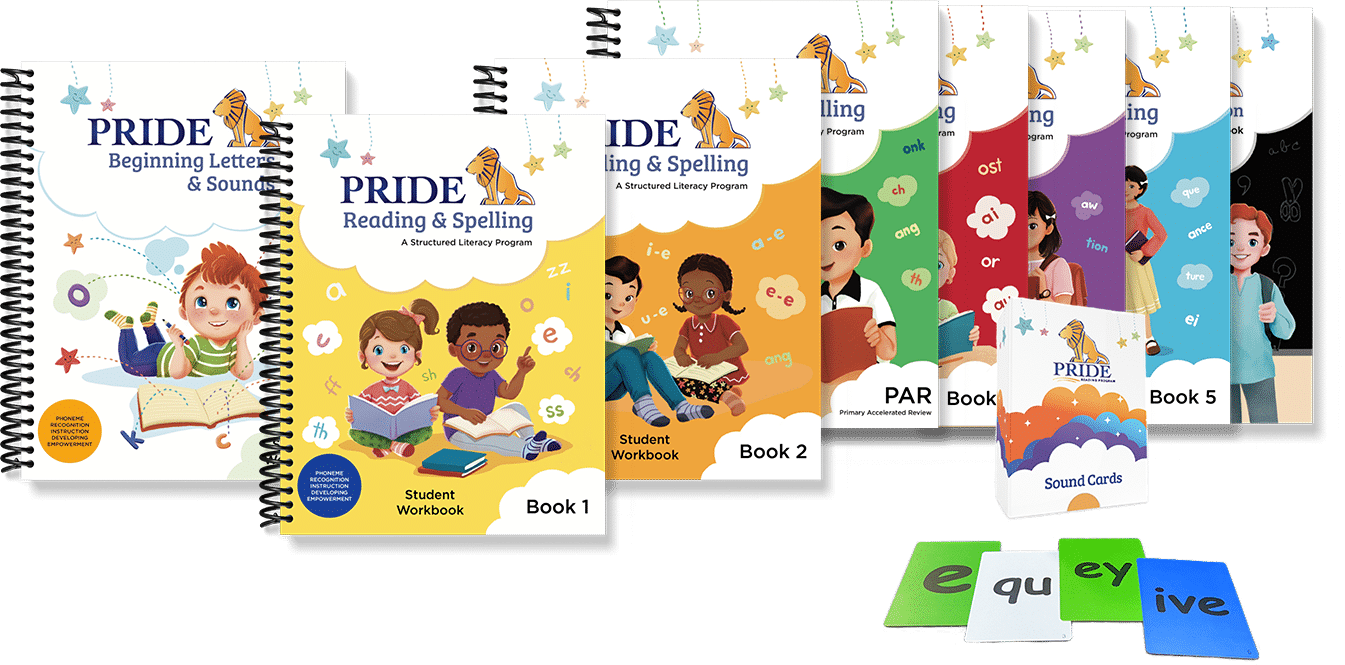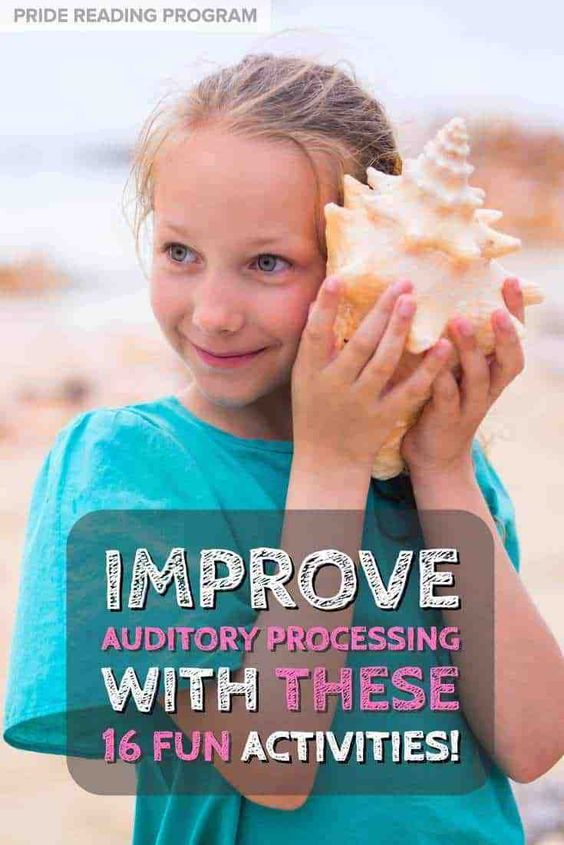Listening to and processing information is a skill that is required throughout life. So, how can you help your child improve these auditory processing skills? In today’s post, I am going to share with you a list of very easy at-home activities that you can practice throughout the day to strengthen and improve auditory processing in your child.
1. Practice Sequencing with Sounds
Ask your child to cover her eyes with her hands while you make a noise such as closing the door, sneezing, or playing a key on the piano. Have your child first identify the noise. Then try two noises, one after the other. Your child will then identify the two sounds in sequence. Add the number of sounds in the sequence until your child gets tired of the game. Some ideas for noises are:
- Whistling
- Snapping fingers
- Sharpening a pencil
- Hammering
- Tearing paper
- Slamming a book closed
- Ringing a bell
- Blowing a whistle
- Clapping
- Coughing
- Drumming with fingers
- Crumpling paper
- Unwrapping candy
2. Name the Mistake
Recite or read aloud a familiar text, poem, or rhyme changing the words or wording. Your child should raise her hand and shout out whenever she hears a mistake. You can even change the words, grammar, sound, and meaning. Also, you can swap the word order or word parts. Here are a few examples:
- Once a time upon…
- Old McDoodle had a farm…
- Twinkle, twinkle little car…
3. Clapping Syllables
Start out by pronouncing each family member’s name by clapping it syllable by syllable. Then ask your learner to say and clap the name along with you. Each clap represents a syllable. After each name has been clapped ask, “How many syllables did you hear?” You can also have your child place two fingers under their chin so that they can feel their chin drop for each syllable. This also allows your learner to feel the vibration of each syllable.
4. Sound Sort
Make picture cards using magazines or computer art. Glue the pictures on index cards and laminate them if you want to. Spread selected pictures in front of your child and ask her to find the picture whose name begins with a certain sound. As each picture is found, have your child name the picture and the initial sound. For example, you can say, “What picture begins with the sound /s/? Your child might respond – “snake, /s/.” Then repeat using middle and ending sounds.
5. Picture Guess
Using the same pictures, place them in a bag. Pick out a picture from the bag and don’t show it to your child. Pronounce the name of the picture, sound by sound. For a picture of a cat, you will say /c/– /a/ –/t/. Then your child guesses what the picture is from your isolated sounds. Take turns guessing each other’s picture.
6. Listen for Sounds
Have your child sit on the floor, close their eyes, and identify sounds that you make. You can drop a pencil, bounce a ball, tap on the window, use a stapler, cut with scissors, sip on a cup of coffee, or type on your computer. Trade roles and then let your child make different sounds that you have to identify.
7. Outside Noises
Sit under a tree with your child. Listen for various sounds like birds chirping, airplanes flying overhead, cars driving by, voices of children, etc. You can have a little notebook on hand and keep a list of all of the different sounds you both come across.
8. Repeat After Me
Sit across from your child and clap your hands to a rhythmic pattern alternating between slow and fast tempos. Have your child repeat the pattern. You can also use various instruments, play a drum, or bounce a ball to a variety of rhythms. Switch roles and let your child be the sound leader as well.
9. Hide and Seek
Hide a metronome or a ticking clock somewhere in your home. Have your child find it by locating the sound. Another variation of this game can be played outside. You can hide somewhere and blow a whistle. Your child will then follow the sounds to find where you are hiding.
10. Practice Focusing
Read a very simple story to your child with soft music playing in the background. Before reading the story, tell your child to listen for specific pieces of information in the story (for example the main character’s name). You can gradually increase the difficulty of the information you want your child to listen to.
11. Comprehension Check
Read an unfamiliar story to your child. Afterward, ask your child questions about the sequence of events. What happened first, who went to the game, etc. Continue to ask questions until the events in the story have been reviewed. You can also ask your child to predict likely events in the story.
12. Play the Game – What’s Next?
First, give your child one instruction. “Go into the kitchen.” Next, give your child two instructions. “Go into the kitchen and grab a spoon.” Then give your child three instructions, “go into the kitchen, grab a spoon, and hide under the table.” Build up the instructions over time. Then switch so that your child gets to give you instructions to follow as well.
13. End-of-the-Day Review
Every night as you tuck your child into bed, discuss the events of the day. Have your child try to remember all the wonderful (or not-so-wonderful) things that happened that day. Can your child recall the events sequentially?
14. I Went to the Market and I Bought…
This is a family game and can be played around the dinner table. Start with, “I went to the market and I bought an apple.” The second person says, “I went to the market and I bought an apple and a banana.” The third person says, “I went to the market and I bought an apple, a banana, and a bag of chips.” Etc., etc…
15. Listen to Music and Memorize the Lyrics
Have your child listen to a song and learn to sing the lyrics. Give your child a song that they are unfamiliar with or one that they do not know the words to already. Replay the tune often until your child can sing the entire song.
16. Memorize a Poem
Have your child memorize a poem and recite it to you. Aim for memorization of at least four to eight short poems during the school year. Keep reciting the old ones and build up a repertoire. Try to pick poems that the child has read and enjoyed. This can begin with simple fun ones and then eventually increase to some rich and deep poetry too.
When you improve auditory processing skills in your child, remember to make it a fun experience for both of you. Just a few minutes each day doing some of the above-mentioned activities will hopefully make a big difference.
Thank you for reading my post today. I hope you enjoy these activities. You might also enjoy reading my previous posts:
3 Ways to Make Teaching Vocabulary Fun!
How Children Learn to Read: A Guide for Parents and Teachers
Harnessing the Power of Phonemic Awareness, Phonological Awareness, and Phonics
Please don’t leave without checking out the PRIDE Reading Program! The PRIDE Reading Program is used by teachers, tutors, and homeschooling parents worldwide with great success.


Karina Richland, M.A., is the author of the PRIDE Reading Program, a multisensory Orton-Gillingham reading, writing and comprehension curriculum that is available worldwide for parents, tutors, teachers, and homeschoolers of struggling readers. Karina has an extensive background in working with students of all ages and various learning modalities. She has spent many years researching learning differences and differentiated teaching practices. You can reach her by email at info@pridereadingprogram.com or visit the website at www.pridereadingprogram.com


This is a fantastic find! Thank you!!